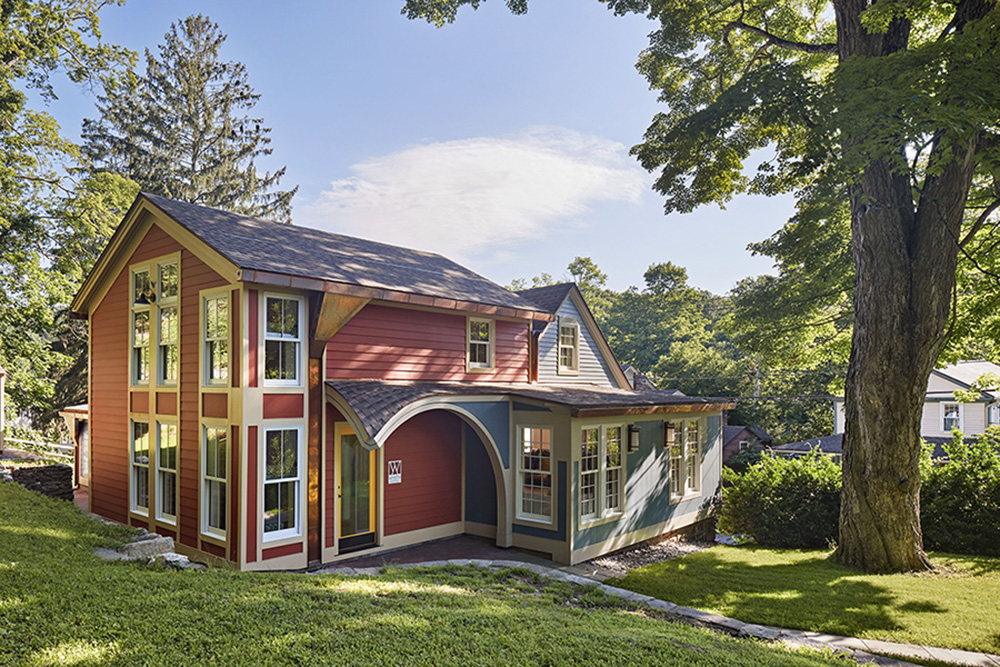
Historical documents show part of this building stood in 1749. Newspaper “insulation” indicates the upper portion was built nearly 30 years later, with pages from “The Connecticut Gazette and the Universal Intelligencer” from 1777.
Now it’s ready to face the 21st century with a historically sensitive, deep-energy retrofit – preserving the historic structure and retaining the village character while introducing energy efficiency and state-of-the-art mechanical systems.
The original hand-hewn structure remains. A small piece of original fascia remained which was reconstructed. Rotted sheathing was carefully removed and replaced with like material. Wood flooring was restored where possible. Walls were detailed to expose construction and joinery methods.
Exterior improvements focus on airtightness. Continuous thermal-bridge-free insulation was added over the exterior of wall and roof framing (the newspaper “insulation” remains). High-performance windows and doors replaced non-original versions; better specimens were reused. The central chimney was mechanically sealed at the top and at the fireplaces – all easily reversable.
The result is a remarkably low air leakage rate for an 18th Century building — 2.7 at ACH 50 (lower than the energy code for new construction). The HERS rating is 58, nearly twice as good as the baseline at 100.
Sophisticated electric air-to-air heat pump systems provide heating, ventilating, and air-conditioning. An enthalpy recovery ventilator (“ERV”) combined with MERV 13 filters constantly brings in fresh air, contributing to a healthy indoor environment.
Interior improvements futureproof the building’s functionality – designed to work as either a residence, as when it was purchased, or an office, as it’s used now. Modern energy-saving LED lighting is discreet and non-invasive. The interior is bright and cheerful.
Exterior materials were chosen with sustainability in mind, not only whether they’re good to the environment, but also for durability and maintenance. The cement board siding and poly-ash trim withstand damage from moisture and rot; they are also pest resistant. The appearance from the street befits its historic neighbors.
The original character is celebrated with exposed historic elements, clapboard siding, and simple trim. Modern embellishments include clog-free copper gutters and downspouts. The subtle changes in the siding, trim, and color treatments tell the story of the building’s evolution.
Now it’s also modernized, durable, resilient, and sustainable – ready for the next 270 years.
Architects
Wyeth ArchitectsConsultants
Structural Engineer: Morrissey EngineeringContractor
Petra Construction CorporationCertifications
